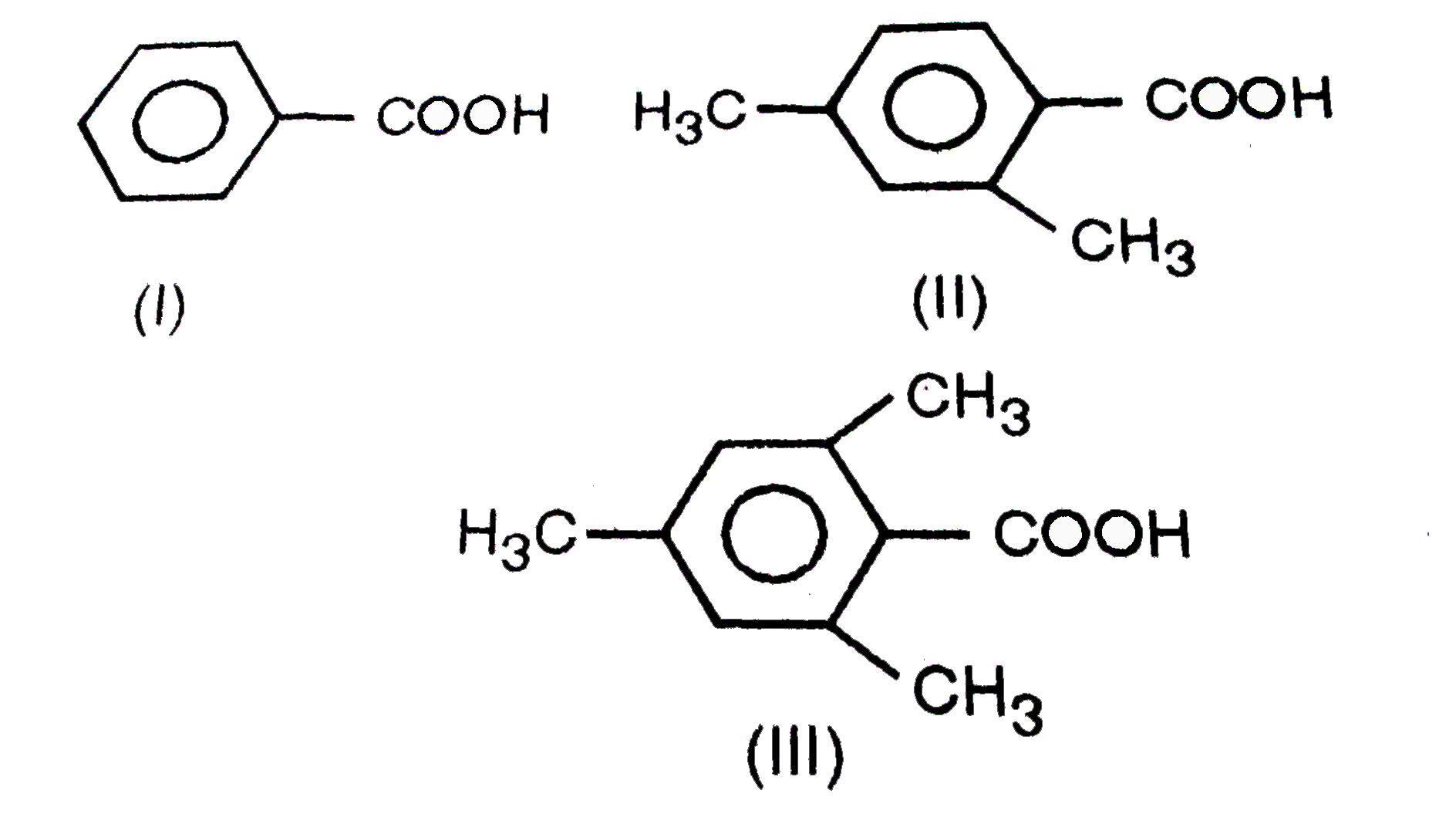Assertion (A): In esterification, carboxylic acid and alcohol reacts in the presence of acid to give ester.
Reason (R) : Esterification is the reverse of saponification.
Both assertion (A) and reason (R) are true and reason (R) is the correct explanation of assertion (A).
Both assertion (A) and reason (R) are true but reason (R) is not the correct explanation of assertion (A).
Assertion (A) is true but reason (R) is false.
Assertion (A) is false but reason (R) is true.
To solve the question, we need to analyze the assertion and reason provided.
1. Understanding Esterification:
- Esterification is a chemical reaction where a carboxylic acid reacts with an alcohol in the presence of an acid catalyst (commonly sulfuric acid) to form an ester and water.
- The general reaction can be represented as:
RCOOH+R'OHH2SO4−−−−→RCOOR'+H2O
- Here, RCOOH is the carboxylic acid, R'OH is the alcohol, and RCOOR' is the ester formed.
2. Understanding Saponification:
- Saponification is the process of hydrolyzing an ester in the presence of a strong base (like NaOH or KOH) to produce an alcohol and a carboxylic acid salt (soap).
- The general reaction can be represented as:
RCOOR'+NaOH→RCOONa+R'OH
- Here, RCOOR' is the ester, RCOONa is the soap (sodium salt of the carboxylic acid), and R'OH is the alcohol produced.
3. Comparing the Two Processes:
- From the above reactions, we can see that esterification and saponification are indeed reverse processes.
- In esterification, the reactants are a carboxylic acid and an alcohol, while the products are an ester and water.
- In saponification, the reactant is an ester, and the products are a carboxylic acid salt and an alcohol.
4. Evaluating the Assertion and Reason:
- The assertion (A) states that in esterification, a carboxylic acid and alcohol react in the presence of acid to give an ester, which is correct.
- The reason (R) states that esterification is the reverse of saponification, which is also correct.
- Since both the assertion and reason are correct, and the reason correctly explains the assertion, we conclude that both A and R are correct, and R is the correct explanation for A.
Conclusion:
Both the assertion and the reason are correct, and the reason is the correct explanation of the assertion.
---
- Esterification is a chemical reaction where a carboxylic acid reacts with an alcohol in the presence of an acid catalyst (commonly sulfuric acid) to form an ester and water.
- The general reaction can be represented as:
RCOOH+R'OHH2SO4−−−−→RCOOR'+H2O
- Here, RCOOH is the carboxylic acid, R'OH is the alcohol, and RCOOR' is the ester formed.
- Saponification is the process of hydrolyzing an ester in the presence of a strong base (like NaOH or KOH) to produce an alcohol and a carboxylic acid salt (soap).
- The general reaction can be represented as:
RCOOR'+NaOH→RCOONa+R'OH
- Here, RCOOR' is the ester, RCOONa is the soap (sodium salt of the carboxylic acid), and R'OH is the alcohol produced.
- From the above reactions, we can see that esterification and saponification are indeed reverse processes.
- In esterification, the reactants are a carboxylic acid and an alcohol, while the products are an ester and water.
- In saponification, the reactant is an ester, and the products are a carboxylic acid salt and an alcohol.
- The assertion (A) states that in esterification, a carboxylic acid and alcohol react in the presence of acid to give an ester, which is correct.
- The reason (R) states that esterification is the reverse of saponification, which is also correct.
- Since both the assertion and reason are correct, and the reason correctly explains the assertion, we conclude that both A and R are correct, and R is the correct explanation for A.
Both the assertion and the reason are correct, and the reason is the correct explanation of the assertion.
Topper's Solved these Questions
- NEW CHAPTERS AND QUESTIONS BASED ON LATEST TYPOLOGIES INTRODUCED BY CBSE FOR 2021-22 EXAMINATION BOOK - OSWAL PUBLICATIONCHAPTER - NEW CHAPTERS AND QUESTIONS BASED ON LATEST TYPOLOGIES INTRODUCED BY CBSE FOR 2021-22 EXAMINATION EXERCISE - CARBON AND ITS COMPOUNDS (SELF ASSESSMENT) (C. Very Short Answer Type Questions)
3 Videos
- NEW CHAPTERS AND QUESTIONS BASED ON LATEST TYPOLOGIES INTRODUCED BY CBSE FOR 2021-22 EXAMINATION BOOK - OSWAL PUBLICATIONCHAPTER - NEW CHAPTERS AND QUESTIONS BASED ON LATEST TYPOLOGIES INTRODUCED BY CBSE FOR 2021-22 EXAMINATION EXERCISE - CARBON AND ITS COMPOUNDS (SELF ASSESSMENT) ( SHORT ANSWER TYPE QUESTIONS)
1 Videos
- NEW CHAPTERS AND QUESTIONS BASED ON LATEST TYPOLOGIES INTRODUCED BY CBSE FOR 2021-22 EXAMINATION BOOK - OSWAL PUBLICATIONCHAPTER - NEW CHAPTERS AND QUESTIONS BASED ON LATEST TYPOLOGIES INTRODUCED BY CBSE FOR 2021-22 EXAMINATION EXERCISE - CARBON AND ITS COMPOUNDS (SELF ASSESSMENT) (OBJECTIVE TYPE QUESTIONS) (A. Multiple Choice Questions)
3 Videos
- METALS AND NON-METALSBOOK - OSWAL PUBLICATIONCHAPTER - METALS AND NON-METALSEXERCISE - Board corner(Long answer type questions)
20 Videos
- NTSE 2019 - 20 BOOK - OSWAL PUBLICATIONCHAPTER - NTSE 2019 - 20 EXERCISE - (CHEMISTRY) ATOMS AND MOLECULES (STAGE - 2)
1 Videos
Similar Questions
Knowledge Check
The esterification of carboxylic acids with alcohols is a kind of
Aelectrophilic acyl substituationBnucleophilic acyl subsitutaionCelectrophilic acyl additionDnucleophilic acyl additionCarboxylic acids and esters are
AFunctional isomersBKeto-enol-tautomersCGeometriacal isomersDNot isomers at allMonocarboxylic acids react with alcohols in presence of an acid catalyst to form:
Aacid chloridesBacid amidesCestersDethers
In esterification of an acid, the other reagent is
View SolutionIn esterification of an acid, the other reagent is
View SolutionIn esterification reaction of ethyl alcohol with acetic acid in presence of dry HCl gas
View SolutionThe reaction of an ester RCOOR' with an alcohol R'OH in the presence of an acid gives
View SolutionGiven three acids

The order of ease of acid catalysed esterification is
View Solution

